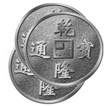
Long ago, people lived on wild animals, fruits and other plants and they didn’t need to use money.
As time passed, families had more products(产品) than they needed, such as animals and crops. So they needed to trade(交易) with others. They began to use money to make it easier. However, it was not like the money we use today. They used shells, rice, salt or large stones.
During the 600s BC, people began using coins as money. Because they were easier to carry than goods(货物), countries began to make coins as their money.

The Chinese were the first to use paper money, probably in the 11th century. An Italian traveler, Marco Polo, saw the Chinese use paper money when he visited China in the 1200s. After his travel, he told the western people what he saw. But European countries didn’t start using paper money till the1600s.
Today we have many ways to pay for things, such as coins, paper money and cards. Some prefer to pay by card. That’s because paying with a card is easier and safer than carrying around a lot of “real” money.
小题1:People began to use money because they ______.
A. lived on plants B. raised animals C. needed to trade
小题2:People used ______ as money during the 600s BC.
A. shells B. coins C. cards
小题3:Which country used paper money first?
A. Japan. B. USA. C. China.
小题4:The passage tells us the ______ of money
A. history B. use C. collection